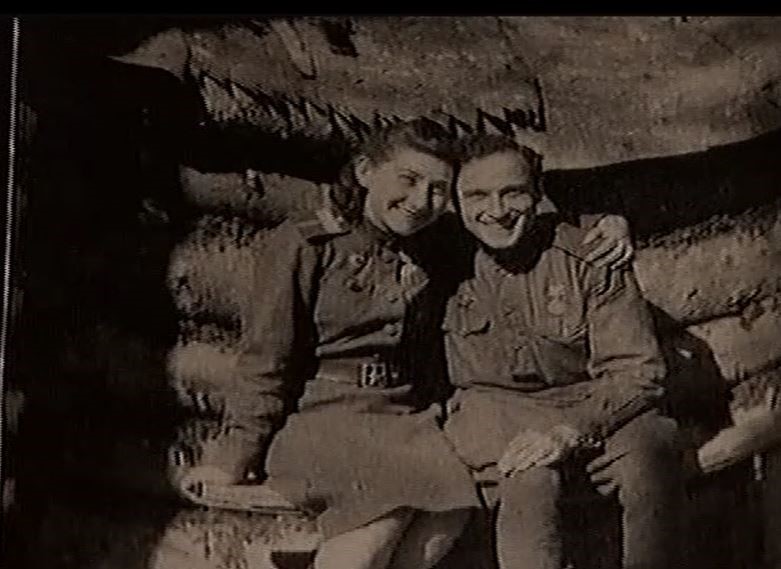Tsipora Blekher was born in 1921 in the townlet of Daugai, Lithuania, as Feiga Shklarsky. Her father Kathriel Shklarsky was a building contractor. Since there was little work for him in construction, he supplemented his income by fishing. Tsipora's mother was a homemaker; however, on Sundays and Christian holidays she ran a restaurant for peasants coming to the church and market in Daugai. Feiga had two sisters and a brother. In 1939, she finished a Hebrew gymnasium for girls in Kaunas. Following the annexation of Vilnius by Lithuania in October 1939, she enrolled in Vilnius (Vilna) University.
On June 22, 1941, the Soviet-German War broke out. Thanks to Feiga's status as a student, she was able to evacuate on that same day, along with the other students. Eleven days later, the group of students, about fifty people in total, arrived in the village of Nikolo-Piostrovka, north of Penza in eastern Russia, to which two large factories producing military optical equipment had been evacuated. Feiga began to work at one of them. The girls decided that they had to volunteer for frontline service, as military nurses. Shklarsky-Blekher recalls that she and her friend Levinson were the first girls to actually enlist, in March 1942; other refugee girls followed suit. 1
After a brief training, the new military nurses, as natives of Lithuania, were attached to the 16th Lithuanian Division of the Red Army. Feiga had to combine the duties of a nurse (treating the wounded, etc.) with routine military service: digging trenches and bunkers, doing guard duty, and taking part in marches. At this stage, Jews made up about thirty percent of the division. As Shklarsky-Blekher recalls, Jews maintained good relations with soldiers of other ethnicities in the division, felt at ease, and even allowed themselves to sing songs in Hebrew, although that language was frowned upon by the Soviet authorities.2
In February 1943, Feiga took part in what is regarded as the "baptism by fire" of the 16th Lithuanian Division: the battle of Alekseyevka, near Oryol, where many soldiers of the division fell. Out of all the engagements of World War II, the Alekseyevka operation is renowned as the battle in which Jewish soldiers made up the highest percentage of the combatants. After the Kursk Salient operation in July 1943, the Lithuanian Division mostly advanced. In late 1943 and early 1944, it fought in northeastern Belorussia, and then it was transferred to Lithuania. There, Feiga learned that her entire family, who had stayed behind in Daugai, were murdered. Her first wish upon learning that was to return to frontline duty and continue fighting the Nazis.
In January 1945, she took part in the liberation of Klaipėda (Memel), after which the division was transferred to the Courland Pocket in Latvia. When the Courland group of the Wehrmacht surrendered on May 8, 1945, Feiga Shklarsky, thanks to her proficiency in German, served as the interpreter at the capitulation ceremony. After the ceremony, some German officers tried to strike up a conversation with her. Feiga rebuffed them, saying that her entire family had perished in Lithuania. The officers "protested": It was not we who killed them, but the Lithuanians. Feiga replied: Before you came, we had enjoyed good relations with the Lithuanians. The conversation was cut short.3
Feiga met her future husband in the army. Like her, Sender Blekher had lost his entire family, who stayed behind in his native Lithuanian townlet. The two were officially married in Vilnius in 1945.
In 1973, Feiga Blekher, her husband Sender, and their two children immigrated to Israel. There, she changed her Yiddish name Feiga to Tsipora.







